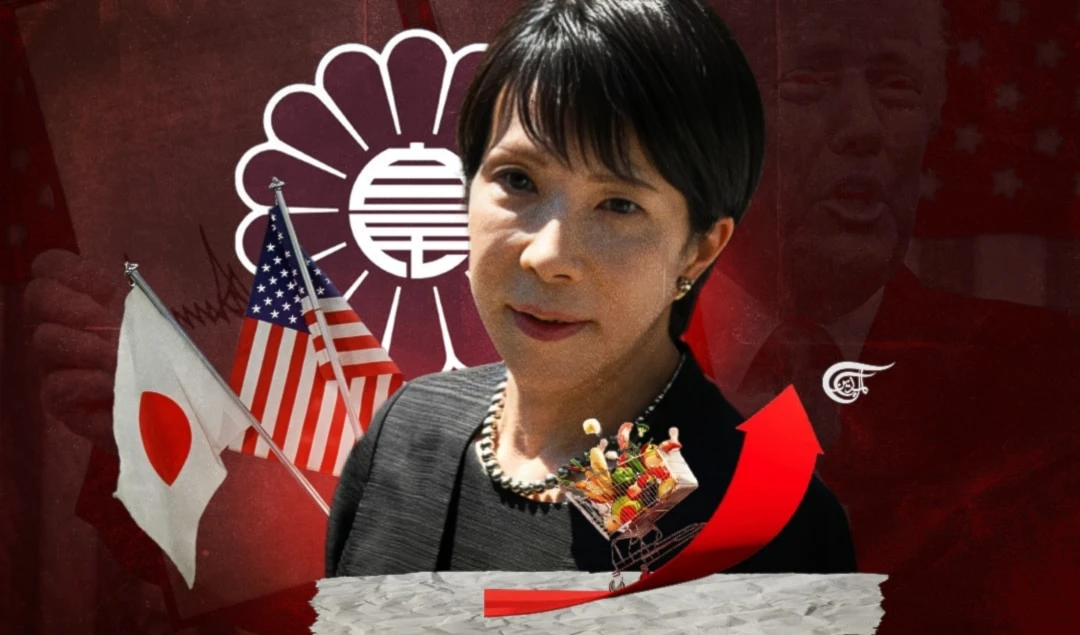The NATO threat in plain sight
Now with cold-war anxieties at the core of Japan-NATO cooperation, there is little doubt that the latter’s unrelenting China obsession will accelerate its alienation in the Asia-Pacific.
-

NATO’s anti-China anxieties keep it from working with regional partners to prevent bloc hostilities in Asia
During his recent visit to Japan, North Atlantic Treaty Organization (NATO) chief Jens Stoltenberg accused Beijing of “bullying its neighbors,” while touting false threat perceptions about China’s role in the Asia-Pacific security environment. A recent joint statement between Stoltenberg and Japanese Prime Minister Fumio Kishida also counted perceived threats among so-called “complex strategic challenges” faced by the international community. Who empowered NATO to project its view as the will of the international community? This is the blatant unilateralism that deserves optimum pushback.
Now with cold-war anxieties at the core of Japan-NATO cooperation, there is little doubt that the latter’s unrelenting China obsession will accelerate its alienation in the Asia-Pacific. This is the same Asia-Pacific security environment that NATO and Tokyo claim to protect, only to undermine its spirit by taking aim at the largest economy in the region.
Begin with the preposterous assertion that NATO is credibly opposed to the use of force and coercion within the region. Recall how similar allegations were used to justify NATO’s resistance to Beijing in its highly contested 2022 Strategic Concept. That very same document is now the focus of NATO’s overdrawn alignment with Japan, conflating peace and stability in the region with zero-sum containment of China. Thus, any strategic coordination that is built on hyping up the China threat is no guarantor of “the rule of law” in the Asia-Pacific. Similarly, it cannot be seen as a symptom of a “staunch partnership” that will guide Asia-Pacific towards future stability.
Rather, NATO’s anti-China anxieties keep it from working with regional partners to prevent bloc hostilities in Asia. Doing so demands a compromise of the very objective informing NATO’s containment designs in Asia: to divide regional loyalties into blocs, secure buy-in for its Strategic Concept, and be accepted as a force for peace, not containment. As Stoltenberg’s remarks made clear recently, NATO once again employs “democracy” as an ideological tool to unilaterally stake claim to the international order. These provocations carry all the hallmarks of a futile and divisive campaign that has nothing to do with the region’s stability.
Interestingly, groundless allegations that Japan and NATO must "remain united and firm" in the face of Chinese ‘security threats’ can’t stand a day’s scrutiny either. They supply more evidence of NATO’s ambition to disrupt Asia-Pacific’s “security environment” based on heightened Chinese threat perceptions, as attempted in the past. Consider the fact that numerous regional powers have tacitly passed on NATO’s projection of China as rivalrous and made it difficult for the military alliance to craft any inroads. Moreover, NATO stands deprived of an audience that wants to extend regional buy-in for its transactional security relationship with Japan. The overtones couldn’t be clearer: the more that NATO insists on opposing and resisting China, the greater the illustration of its own challenge to Asia as a potent security threat.
“What is happening in Europe today could happen in east Asia tomorrow,” said Stoltenberg at a joint press conference with Kishida in Tokyo, touting parallels between the two.
Such veiled rhetoric is aimed at making the Ukraine war more about China, and less about NATO’s demonstrated role in seeing the conflict through. What Stoltenberg refuses to share is that NATO – not Beijing – willingly escalated the war in Ukraine, shut the door on cooperative diplomacy when called upon, and leveraged outsized military support to pursue Trans-Atlantic security at the expense of other states. All this is a scathing indictment of his assertion that the same trans-Atlantic security is “deeply interconnected” with the security of the Asia-Pacific itself. Asia, driven by a shared belief to coexist and resolve differences, wants none of this military baggage.
On regional autonomy, let's also be clear that this is the region’s call. Just like it is Asia’s call to back a truly representative rules-based order, an enabling regional security architecture, and a promising future for itself.
Finally, from “hybrid” challenges to so-called emerging threats, talk of a new “Japan-NATO cooperation” is exceedingly overblown. For instance, it is driven by the assumption that the Indo-Pacific represents an increasingly volatile strategic environment, and that China is among the “complex” strategic challenges meriting global concern. A similar thread of cold-war mentality dominates NATO-Japan ‘cooperation’ on other fronts. That includes pushback against “disinformation and strategic communications” – a poor sell, given Stoltenberg’s blatant falsehood that Beijing is somehow responsible for “spreading misinformation about NATO.” The excessive focus on containing China confirms that there is nothing of strict bilateral substance between NATO and Japan. The two self-identified proponents of democracy are looking at a dead-end with their ideological project in Asia.
All told, whether in the context of exploiting Asia-Pacific’s security architecture or peddling falsehoods to converge with Japan, NATO’s concerted push to single out China is a recipe to cement its own undoing. These provocations may sell under the garb of democracy elsewhere. But in Asia, it is a different reality altogether.

 Hannan Hussain
Hannan Hussain
 5 Min Read
5 Min Read











